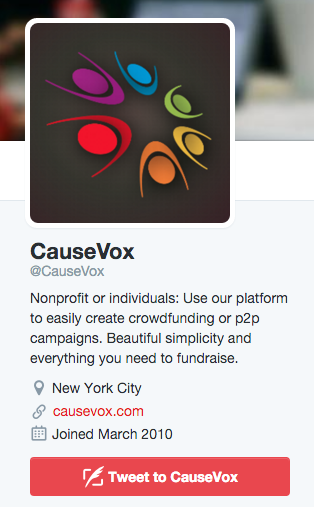It comes as no surprise that the social media landscape is constantly changing. New platforms, new algorithms, new tools, new features, new rules, and new users—it’s enough to make your head spin. And, unfortunately, it also means that what worked really well for you last year might not go just as flawlessly this year.
Because of the tumultuous nature of your social media presence, It’s important to constantly review and subsequently revise your nonprofit social media strategy year after year in order to stay on top of your game. And, conducting a social media audit is the perfect way to get the ball rolling on that.
A social media audit? It sounds formal and complicated, doesn’t it? But, it’s really not. This post has everything you need to know in order to conduct your very first one and step up your social media game in the next year!
What is a social media audit?
When you think of the term “audit”, you likely immediately think of taxes and finances. An audit of that nature involves analyzing your financial accounts.

However, a social media audit is really quite similar—except that it involves your social media accounts.
It’s essentially a step-by-step process that allows you to look at your current social media operations and online presence and determine how well things are working for you. Are you doing a good job managing your online presence? Or, are there areas where you could improve?
Don’t get discouraged—nearly everybody should find different places where they can kick things up a notch. That’s the point of the entire audit!
How do you conduct your own social media audit? Start by following these five steps.
Step One: List Out All Of Your Accounts
First things first, you need to have a solid handle on everywhere you appear in the social media landscape. So, it’s time to start a spreadsheet. This will allow you to clearly see the big picture of your current social media presence.
Create a column for the type of account, the profile name, the URL, number of followers, and the date of your last activity on that specific profile.You’ll end up with something that looks like this:

This exercise alone will start to clearly show you where you’re doing well, as well as where you could devote some extra time and attention.
However, this is also an important step to help you determine if there are any accounts you should eliminate altogether. If you don’t have time to remain active on all of your current platforms, you should make the choice to focus your energy into doing your best with the ones that are truly performing well for you.
If we had a Instagram profile listed in that spreadsheet with only 42 followers and no activity since sixth months ago? That would be a pretty good indicator that we should bid that account adieu and eliminate it completely.
Step Two: Determine Your Mission
You don’t want to be aimless with your social media strategy. Instead every move you make and post you create should be pushing you toward a larger, overarching objective.
But, that’s obviously a tricky path to navigate if you have no idea what your goals with social media are. And, when conducting your audit, you might notice that your social posts from the past year were sort of all over the place—there was no cohesiveness.
So, let’s start with the big picture first. Sit down and identify what exactly your nonprofit’s goals with social media are.
Do you want to use social media to increase awareness of your organization as a whole?
Do you want to use your accounts to recruit more volunteers?
Are you hoping to use them to drive more traffic to your donations page?
Clearly outline exactly what social media should accomplish for your nonprofit.
Next, it’s time to determine a specific mission for each of your accounts. Let’s say your main objective with your social media strategy is to lead people to your donations page and garner more contributions. From there, you’ll determine that:
- You’ll make your hard asks on Facebook (including a link directly to your donations page).
- You’ll use Twitter to share timely updates and interesting tidbits about your current campaigns.
- You’ll use Instagram to share moving images that clearly illustrate your impact and the positive change donations inspire.
Those individual goals all contribute to the larger objective—meaning your social media accounts will be working in tandem to take your nonprofit to the next level. Gathering this information will undoubtedly be important when it comes time to put together your actual strategy.
Step Three: Dig Into Your Analytics
Now it’s time to dig into the numbers and see how well you’ve been performing. Visit your Facebook Insights and Tweet Analytics to get a handle on how you’ve been doing there.

If you don’t currently have Google Analytics setup to track your social media accounts, you should still check in there to see which of your accounts are referring the most traffic to your website—that’s a good piece of information to know.
So, what sorts of questions should you ask yourself as you’re looking at these numbers? Here are a few ideas to get the wheels turning:
- Which of my accounts are seeing the highest engagement rates?
- What type of content sees the highest engagement—links, images, videos, etc.?
- Are there certain times of day that see higher engagement than others?
- What does my current social media audience look like? What are their interests? What really resonates with them?

Finally, you should also do a quick Google search of your nonprofit’s name to see which social media accounts show up.
Not only will this allow you to see which of your accounts are ranking in that space, but also if there are any imposter accounts that were set up that you need to request be shut down.
When you put a lot of effort into your social strategies, you don’t want a poser out there that could undo all of your hard work with a few foul posts or crude tweets.

Step Four: Make Necessary Updates
Chances are, you change things here and there when it comes to your social media accounts—but then neglect to make the same update across the board.
This results in a hodgepodge of branding across all of your different platforms. Your old logo as a profile photo here, the incorrect website listed there. They might seem like minor details, but they can really be a detriment to your entire online persona.


This is your opportunity to comb through all of your profiles, look for inconsistencies, and patch them all up! After all, you want your accounts to be in tip-top shape before launching into a brand new strategy for the year.
Step Five: Identify What Competitors Are Doing Well
I know, taking a magnifying glass to what your competitors and industry peers are doing can be downright discouraging at times. But, it’s also a chance for you to identify key ways you can improve your own strategies.
Jot down (or better yet, enter in a new tab of your spreadsheet!) about five of your key competitors. Include links to their different social media profiles as well as some detailed notes about what they’re doing really well—and what they’re doing not so well. It’s a great tactic for determining exactly how you’re keeping up with the competition in regards to social media.
As mentioned previously, the only constant is truly change when it comes to social media. So, analyzing your competitors is also a great exercise for determining if there are any new platforms you should be a part of.
New networks are constantly cropping up (like Periscope or Blab, for instance), and you’d hate to be missing out on an opportunity to share your message in a innovative and fitting new way—particularly if your direct competitors are active in that space.
Wrapping Up: Where Do You Go From Here?
Now that you’ve put in the legwork by going through your existing accounts and strategies with a fine-tooth comb, you’re armed with the knowledge you need to pull together a solid nonprofit social media strategy for this year.
Creating your overall strategy is a separate process from your comprehensive social media audit—but the two rely heavily on each other. The information you gathered and the opportunities for improvement you identified during your audit should all directly impact the formation of your next strategy.
So, get to work, follow these steps, and you’re well on your way to taking your social media marketing up a notch—or even a few notches!




